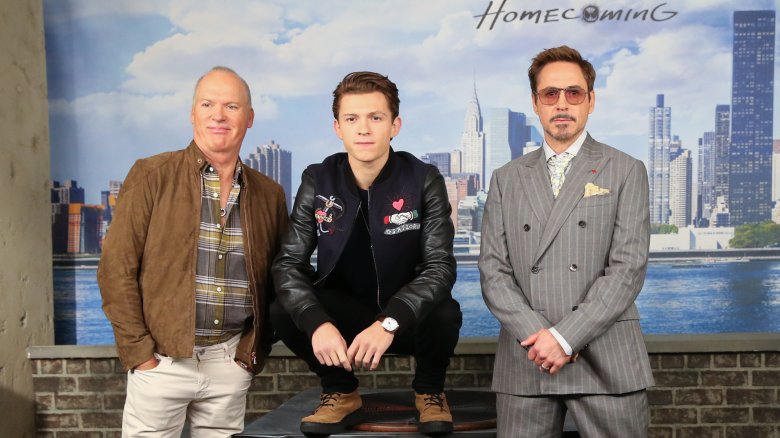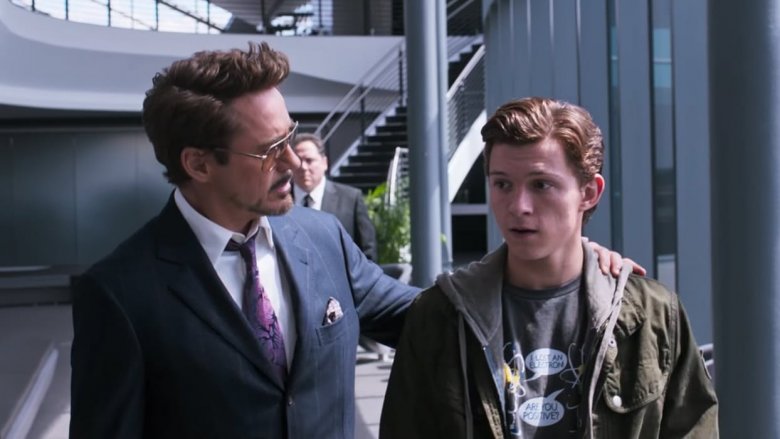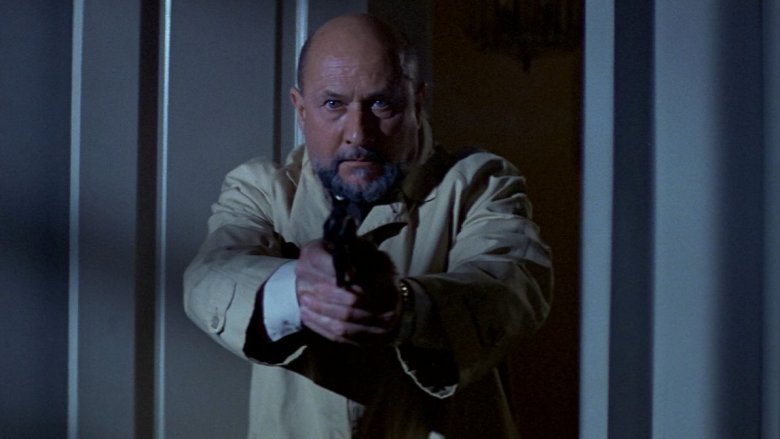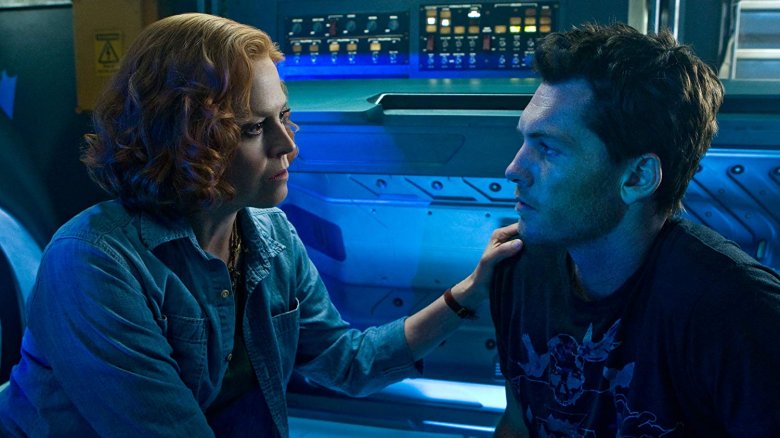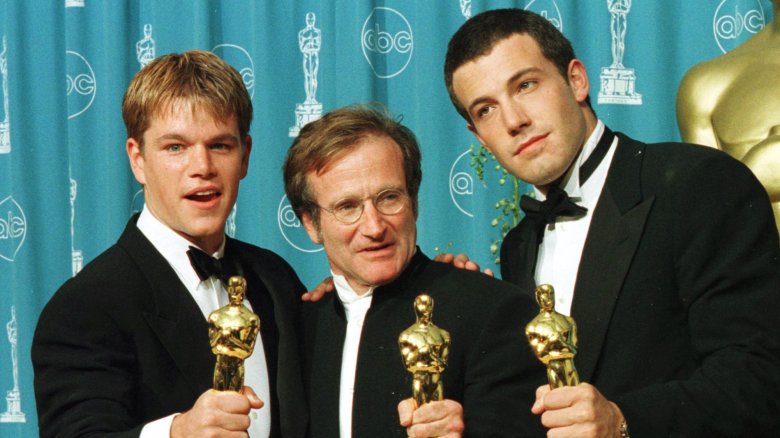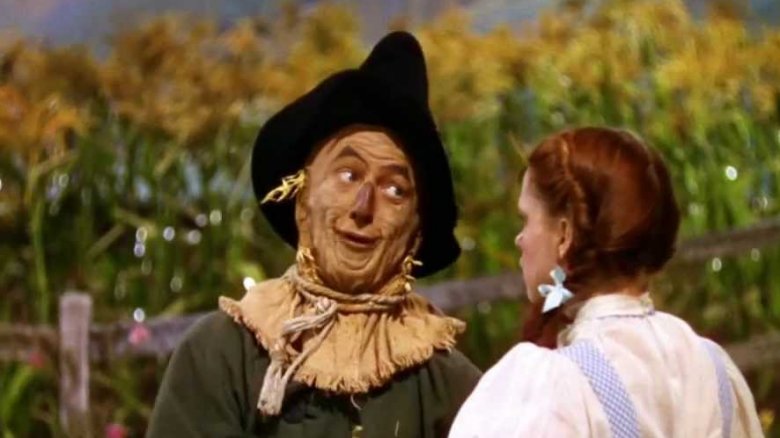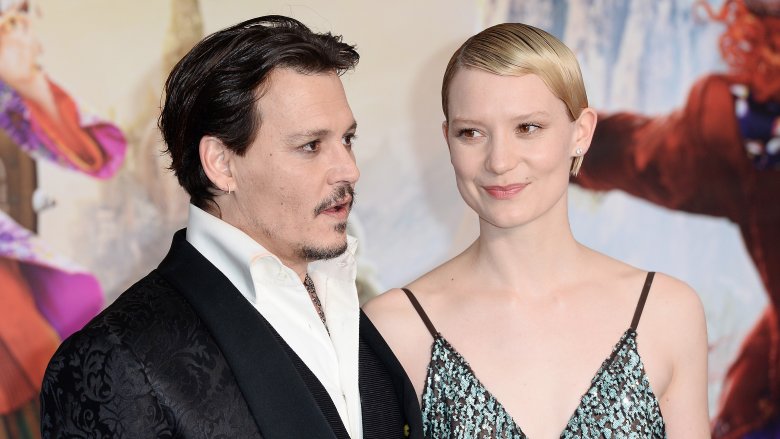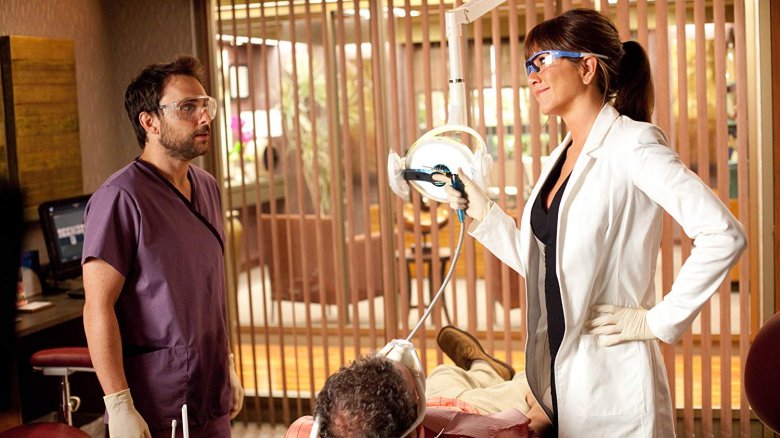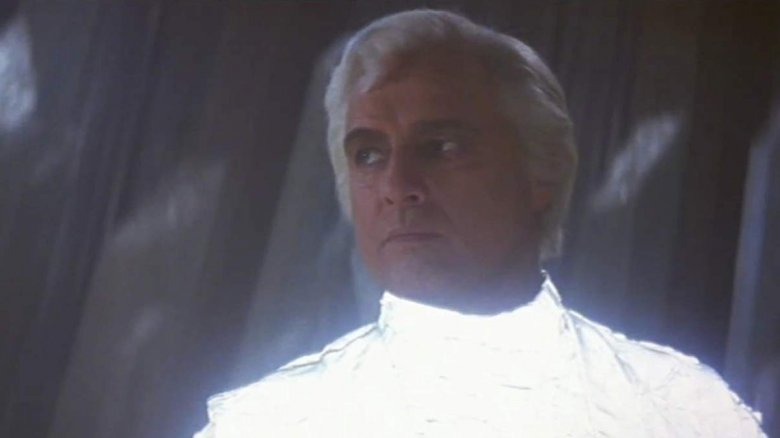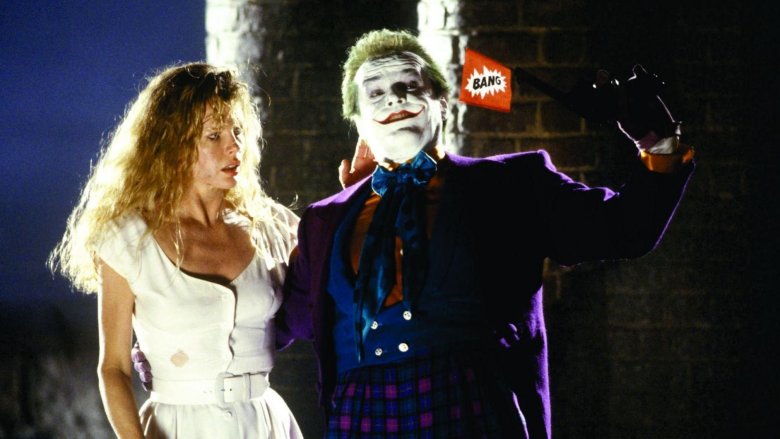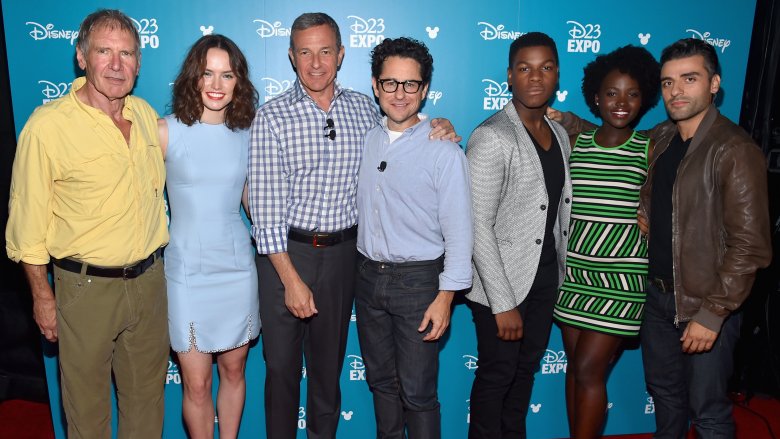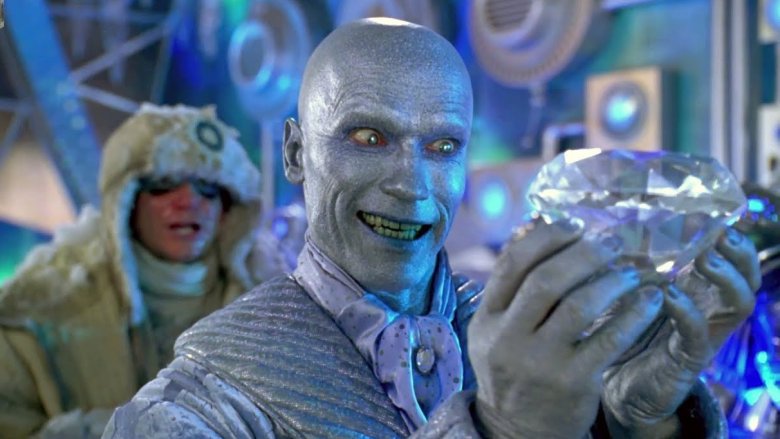Supporting Actors Who Were Paid More Than The Lead
Gilbert Gottfried once said, "If you're a lead actor, people are just waiting to say 'you're too old' or 'you're too unhip.' If you're a supporting actor, you can just work forever." What he failed to mention is that if you're a supporting actor, you can also still rake in the big bucks, too! In fact, it's not completely outlandish for supporting actors to actually make more money than their film's lead.
There's a reason why the Academy Awards include a category for Best Supporting Actor/Actress. As Gottfried touched on, age is a critical factor in an actor's career. There seems to be a ticking clock on the number of years an actor can still play the main protagonist in a film, so what does he do when that time expires? The answer: take a supporting role (but still get paid like a lead). Throughout Hollywood history, supporting actors and actresses of all pedigrees have found ways to outshine, outperform and even out-earn their film's main characters. From memorable villains to exemplary role models, here are some examples of actors and actresses that played supporting roles and actually earned more money than their films' leads.
A costly 15 minutes
In the world of Marvel Comics, genius billionaire/playboy/philanthropist Tony Stark has an estimated net worth of $12.4 billion. Peter Parker, on the other hand, is probably one of the poorest members in the superhero community, most likely bringing in around $40,000 for freelance photography. Thus, perhaps the MCU was simply sticking to the source material when they decided to pay Robert Downey Jr. a reported $10 million for roughly 15 minutes of screen time in Spider-Man: Homecoming, while allegedly only shelling out $1.5 million for Tom Holland's leading performance.
It should come as no surprise that Downey's presence commands a pretty penny. Forbes lists him as the third highest-paid actor in 2018, pulling in roughly $81 million primarily thanks to Marvel movies. Still, it's shocking to wrap your mind around the fact that he essentially got paid roughly $666,000 per minute for a film that isn't even about his character! For that kind of coin, maybe they should've renamed the movie Iron Man 3.5: The One About Spider-Man.
Talk about slashing the budget
In his glowing review for 1978's Halloween, legendary film critic Roger Ebert raved about the realism of the film's characters. "They're all ordinary, everyday people — nobody's supposed to be the star and have a big scene and win an Academy Award," he argued. "The performances are all the more absorbing because of that." While Ebert's opinion certainly holds merit, Halloween was actually a bit of a springboard for the career of Jamie Lee Curtis, who played the lead role of Laurie Strode. The daughter of Psycho's Janet Leigh, Curtis has "scream queen" in her DNA, and some consider her performance in Halloween her breakout role.
Breakout role or not, Curtis was not the highest paid actor on set. According to The Cheat Sheet, she only took home about $8,000 from the slasher classic, while her costar Donald Pleasance, who played the role of Michael Myers' psychologist Dr. Sam Loomis, earned roughly $20,000. Pleasance reportedly only worked five days, ultimately resulting in a mere 18 minutes of screen time.
Opening Pandora's box office
James Cameron's Avatar was a huge blockbuster that is still widely regarded as the biggest movie ever. It reeled in a whopping $2.787 billion at the box office, sparking talks of not just one, but three sequels. Perhaps most impressively, it still wears the crown of highest grossing film of all time, despite the fact that it hit theaters roughly a decade ago. Good luck topping that, Avengers!
For a movie with this kind of crazy financial success, you might assume that everyone involved with its production walked out with seven-figure paychecks. You would be wrong. According to the New York Times, leads Sam Worthington and Zoë Saldana were paid "fees that were more than guild minimums but less than enough to make them feel financially secure," while Sigourney Weaver, who played the supporting role of Dr. Grace Augustine, was the highest paid performer on the set. It will be interesting to see if Weaver still earns the highest salary in the Avatar sequels, for which James Cameron has confirmed she will return.
A wicked smart deal
Although Matt Damon and Ben Affleck were the scribes who penned the screenplay for 1998's Good Will Hunting, they were far from the highest-paid people onscreen. That honor would go to Robin Williams, whose portrayal of grieving therapist Dr. Maguire earned him his first and only Oscar for Best Supporting Actor. In Dave Itzkoff's biography, Robin, it is revealed that although Williams' pay was lower than his typical asking price, he still got paid roughly $3 million in upfront salary, with an addition of "a portion of the movie's profits, if it earned any."
Years later, Matt Damon appeared on The Bill Simmons podcast and opened up a bit more about the film's financials. Damon noted that although he was paid $350,000 for his performance in the film, Williams had been the real winner in terms of negotiation: "Robin made this incredible deal where if the movie made over $60 million, he started to get some sort of escalating participation." The film went on to gross $225,933,435 worldwide, which, you might notice, is quite a bit more than $60 million.
The ruby slippers must've been knockoffs
Can you imagine the Wizard of Oz without Dorothy? In her 1939 breakout role, Judy Garland stole the hearts (and ears!) of audiences across the nation with her show-stopping performance of "Somewhere Over the Rainbow," a song that is still influencing artists today. Although the film introduced several iconic characters, including the Wicked Witch of the West, the Cowardly Lion, and Toto the dog, to say that Dorothy is the most recognized is a fair assessment.
It might come as a shock, then, to learn that Judy Garland was not the highest paid performer for the Wizard of Oz — in fact, she made less than almost every other actor on set, only taking home a measly $500 per week, only $375 more than they paid Terry the dog for his role as Toto. The top earners on the set were actually Ray Bolger, who played the Scarecrow, and Jack Haley, who played the Tin Man. Reportedly, each was paid $3,000 per week. He may not have had a brain, but the Scarecrow had a fat wallet, considering the time period.
The Mad Hatter makes mad money
In Tim Burton's 2010 live-action version of Alice in Wonderland, you could make the case that Alice is hardly even the main character, despite it being her name on the posters and her journey we are witnessing. That's what happens when you cast Johnny Depp, who not only has massive audience appeal (especially in 2010, before scandals and controversies plagued his reputation), but also demands a big paycheck for his appearance. With Depp, Burton took the role of the Mad Hatter and turned it into one of the highest-paying parts of all time.
According to Money Nation, Depp was paid $10,354,778 to play the Mad Hatter, which, to put into perspective, is reportedly just a bit more than the $10 million he was paid for his leading role of Captain Jack Sparrow in Pirates Of The Caribbean: The Curse of the Black Pearl. It's no wonder he was lured back to reprise the part for 2016's underwhelming sequel, Alice Through the Looking Glass.
A not-so-horrible payday
In Horrible Bosses, Jennifer Aniston plays Charlie Day's nymphomaniac boss, Dr. Julia Harris. The R-rated role was a sharp turn of character for Aniston, who had more of a reputation for being "America's sweetheart." In the film, Aniston spouts out raunchy line after raunchy line, throwing sexual advances at Charlie Day's character with an undying determination. It's like if Austin Powers was turned into a woman, only with far more aggressive pickup lines.
Although her dialogue in the film is filthily smutty, Aniston didn't have to memorize much of it. According to USA Today, she said a total of 856 words in Horrible Bosses, earning roughly $7,715 for each one. Grab a calculator and you can figure out that her total pay for the film's small role was $6,604,040, which made her the highest paid performer on the movie, even earning more than leads Day, Jason Bateman, and Jason Sudeikis. Aniston doesn't get dirty all too often, but when she does, you can bet she's getting paid well for it!
An offer he can't refuse
A mere four years after his iconic performance as Don Vito Corleone in The Godfather, Marlon Brando accepted the role of Jor-El in 1978's Superman. As the father of the Man of Steel, Brando's contributions only made up about 15 minutes of the film's 143-minute duration, but don't let that convince you that the man didn't still collect big dough.
Brando reportedly picked up $3.7 million up front, but due to a savvy agreement for a share the film's profits, he ultimately took home an impressive $19 million in total. This was considerably more than Christopher Reeve was paid for his portrayal of Superman, despite being the lead. Perhaps this major pay discrepancy contributed to Reeve's negative comments about working with Brando. In an interview with David Letterman in 1982, Reeve claimed that Brando "phoned in" his performance: "I just think it would be sad to be 53, or whatever he is, and not give a damn, that's all."
The billing joke
The Joker might have insisted that if we could see inside, he was really crying, but that's harder to believe when you know what kind of coin Jack Nicholson pulled in for his turn as the the character in 1989's Batman. According to Entertainment Weekly, Nicholson ended up earning way more than the $6 million Warner Bros. paid him upfront. Instead of his usual $10 million fee, he took a lower salary in exchange for a cut of the profits on the back end — including some of the proceeds from Batman Joker toys. The deal worked out well: Nicholson reportedly banked more than $50 million in the end.
Although some fans claim that Michael Keaton's run as the Caped Crusader is still the best of all who donned the cowl, he most likely wasn't paid on the same level as Nicholson. It's worth taking with a grain of salt, but The Movie Times has Keaton's salary listed at $5,000,000, with nothing mentioned for back-end deals. A film is only as good as its villain, and a good villain isn't always cheap. As Heath Ledger's Joker would famously claim some 19 years later, "if you're good at something, never do it for free." Nicholson surely didn't!
Han's salary not So-Low
A good bounty hunter never shies away from a big score, and Harrison Ford has apparently learned a thing or two from playing iconic outlaw Han Solo. According to Variety, Ford "came away as the big winner" on the set of Star Wars: The Force Awakens, raking in an estimated salary of $10 million to $20 million to reprise the role that made him famous in 1977. Although the other members of the original trilogy, Mark Hamill and the late Carrie Fisher, also took home reported seven-figure salaries, the film's leads, John Boyega and Daisy Ridley, were only paid in the $100,000 to $300,000 range.
While it may seem like that number is a bit outlandish for a single supporting role, it's important to note that The Force Awakens was Ford's final paycheck from the Star Wars franchise. All of the other actors returned for the sequel, Star Wars: The Last Jedi, but Ford's swan song took place in the climax of The Force Awakens. All things considered, doesn't it seem only fair to send off one of pop culture's most notable figures with an eight-figure paycheck?
Freeze-y money
If an apple a day keeps the doctor away, what does a million dollars a day do for you? Arnold Schwarzenegger is probably one of the few people in the world that could tell you. The Hollywood Reporter reports that for his portrayal of Mr. Freeze in Joel Schumacher's Batman & Robin, Arnold "received top billing, and a hefty $25 million payday," which factored out to roughly $1 million for each day he spent on set. Not a bad outcome for a film that is widely considered the worst Batman film, by far.
George Clooney is often the highest paid actor in his films, especially when he's playing the lead; however, Schwarzenegger is not your typical supporting actor. The one-time highest-paid actor in the world, he's a staple of action movie history, and despite the misfire that Batman & Robin ended up being, Schwarzenegger still had no regrets, telling Empire that he "felt that the character was interesting, and two movies before that one Joel Schumacher was at his height." It's hard to have regrets when you profit such a fortune off of a flop.
